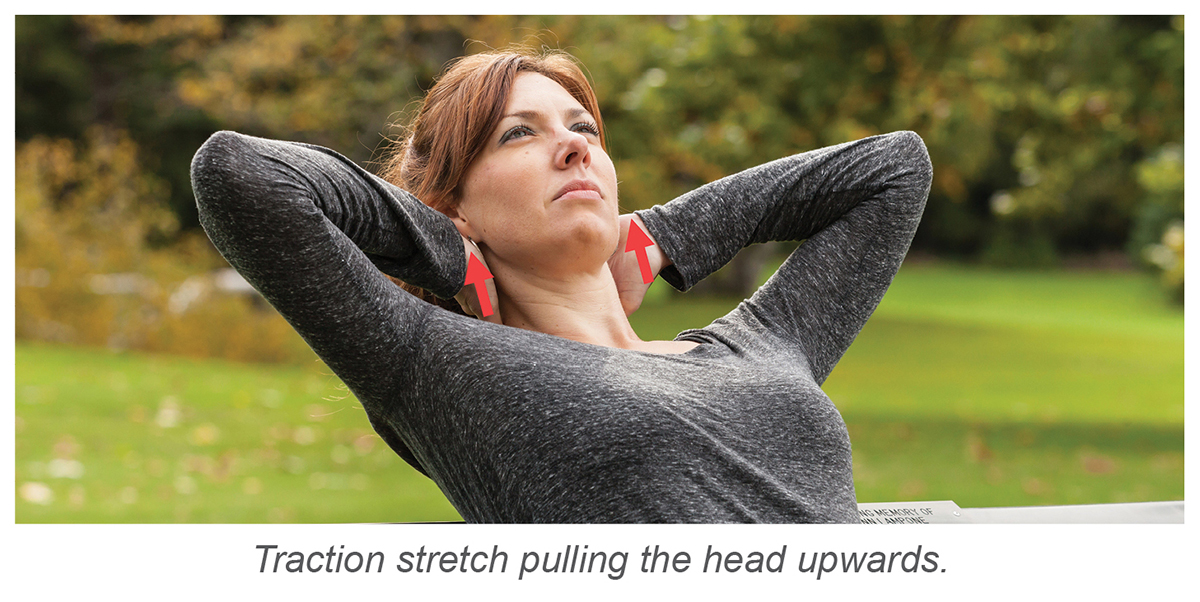Chin Tucks may not Stretch your Suboccipital Muscles Sufficiently
The suboccipital muscles, you remember, are four of the small in stature but large in pain-production muscles situated at the base of your neck, just below the back of your head. The chin tuck technique can stretch out the suboccipital muscles to get your headaches better.
You might even use the chin tuck technique to reposition your jaw to decrease the annoying click it makes when you open it. Poor posture can cause problems in more areas than just your head.
You may have identified the suboccipital muscles as the source of your pain. However, the chin tuck exercise for whatever reason just may not be doing the job for you. You know your foam roll could help target the suboccipital muscles quite nicely. Unfortunately, you cannot fit the foam roll in your back pocket. You need a technique to target the suboccipital muscles that is easy to use.
You had the Right Idea, but not Enough Power to Do the Job
The chin tuck moves your head in a horizontal direction when you sit in a chair. You may find you also need to go vertically to get a further stretch of the suboccipital muscles. Add a little vertical force and you may go a long way to relieving your headache!
How do you do that? Grab onto the back of your head. Your thumbs wedge right underneath the part of your skull that is roughly even with your earlobe. Everyone’s anatomy is just a little bit different, so your head may be flatter than the average. In that case, you will have to struggle a bit to apply the upward pressure. On the other hand, the base of your skull may be shaped just right to give you a perfect handhold to lift upwards.
The “Atlas” Effect
The uppermost neck bone is called the “atlas” as it bears the weight of the entire head on top of it. If the head is not balanced properly on the neck, the occipital muscles that help support the head become overtaxed. These muscles then produce your headaches.
Feel your headache melt away as you lift your head upwards. You may truly get taller, too, if you have a bad forward head posture that keeps you slumping forward all the time. Remember, that slumped posture is a sign that those suboccipital muscles are working overtime and are going to be tight. They will thank you for lifting the weight of your head off them.
How Long should the Head be Lifted Up?
You may become tired, as Atlas did, as you try to support your head. 15-30 second holds should be sufficient. Lift up as many times a day as you need to take pressure off your head.
If you have shoulder pain, bring your elbows forward to relieve shoulder strain. Of course, if you have significant shoulder problems, this technique is not right for you.
You may find you do better when you lie down and lift the head away from your trunk. Look for the neck-lengthening effect, whether in sitting or lying down.
Cervical Traction Unit – Check with your friendly neighborhood physical therapist
Your shoulders may not be able to deal with the strain of pulling the head vertically. Yet, it feels so good to give your suboccipital muscles rest as your head unloads from them. What to do?
Consider a cervical, or neck traction unit. I use the units once in a blue moon when there are no other options. The ones that I find work the best are the ones where you place your head into the padded neck cushions and then pump a small hand-held pneumatic pump.
Make sure your neck and the unit are lined up at the proper angle. If not, your head will bend forward rather than vertically. You will most likely need to see your physical therapist to assist with the set up.
Technique Errors
A common mistake is for you to bring your head forward rather than upward. If your headache does not fade, recheck your grip and direction and try again. If you cannot make the technique work right for you, abandon the attempt. Check with your personal physical therapist to find out what you are doing wrong.
You might also let your head tilt too far backwards. Avoid any dizziness or increased strain at the junction between neck and head. Remember, the lifting technique is to be one of relaxation and relief, not strain!
As always, check with your MD to make sure this, and other techniques, are appropriate for you. Add this one to the toolbox of headache helpers!
-You understand that if not done properly, some techniques and exercises described in this blog could harm you. Any activities you perform are at your own risk, and you expressly agree to waive any claims against the author for any harm that may arise from your own actions. By reading this blog and conducting these exercises, you accept this risk. This blog provides content related to physical and/or mental health issues. As such, your use of techniques described acts as your acceptance of this disclaimer. Consult Chapter 2 in my book, “Calming the Headache Storm” to make sure the headache is not the sign of a more serious problem. The techniques, advice and strategies contained in this blog may not be suitable for every individual and should be abandoned if your headache increases. Seek the advice of your physician.
